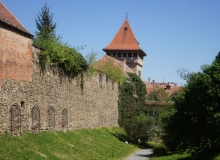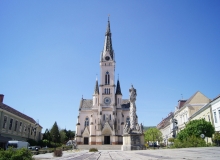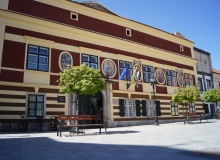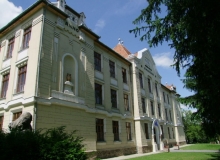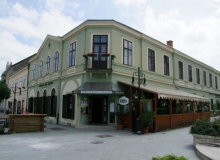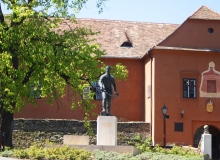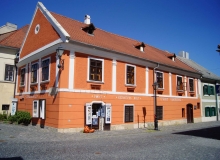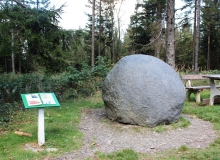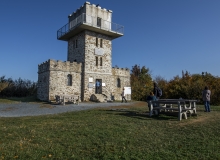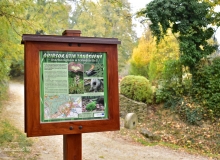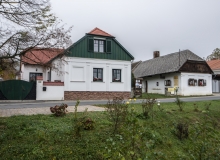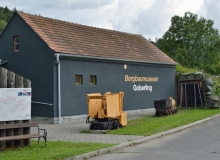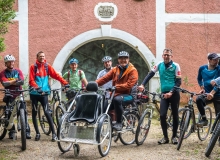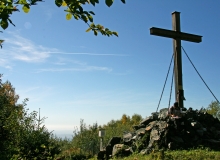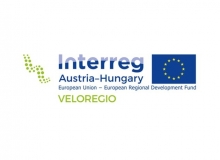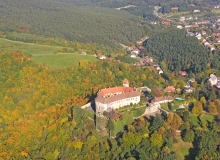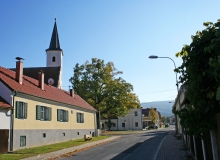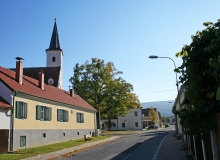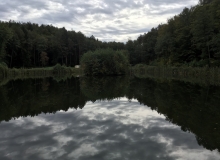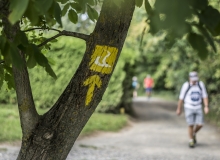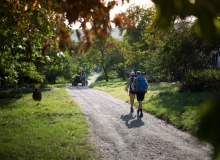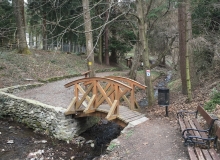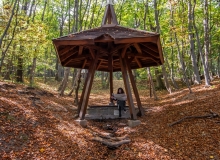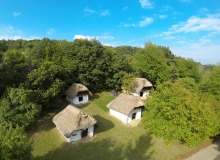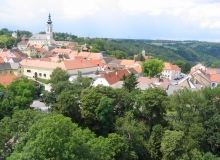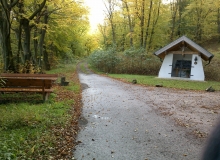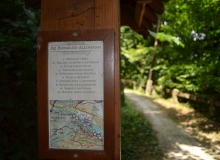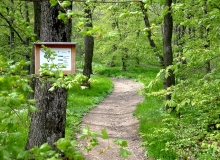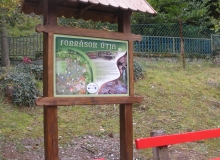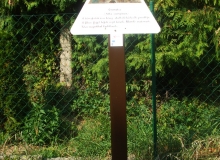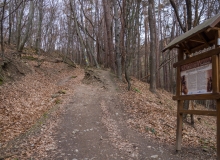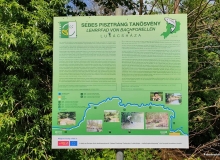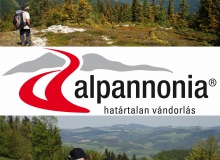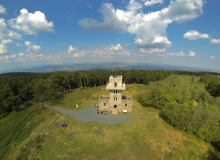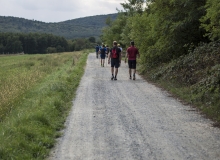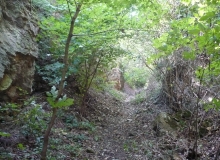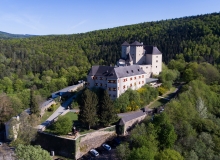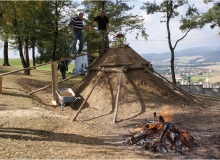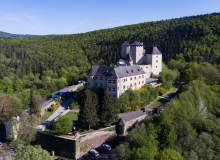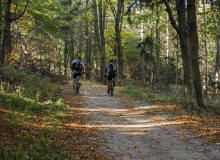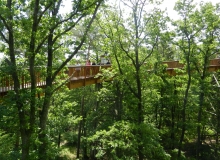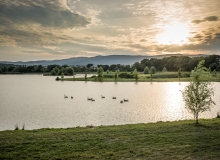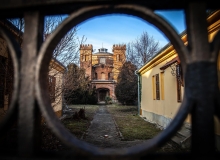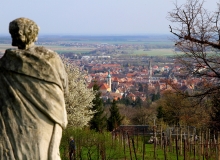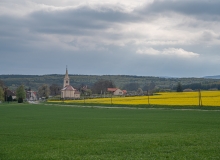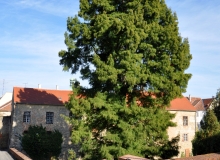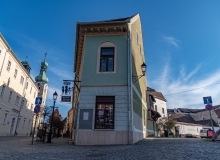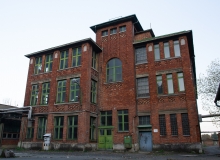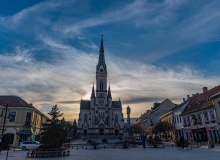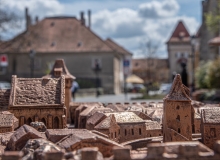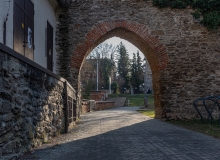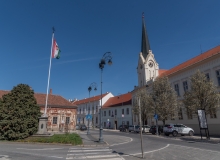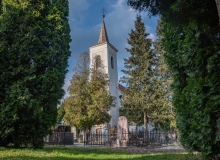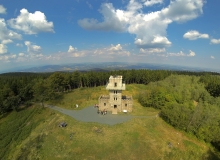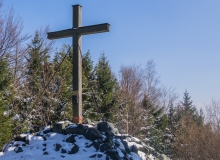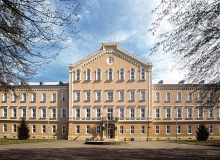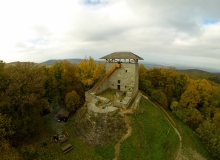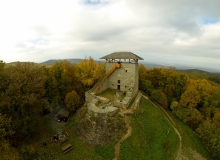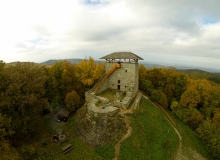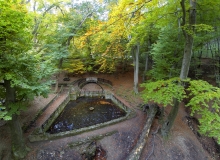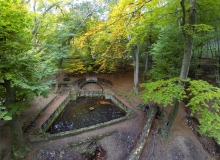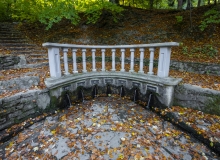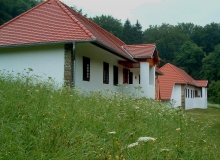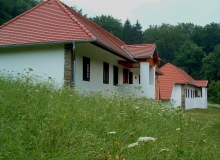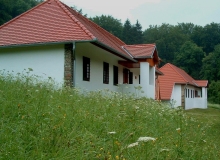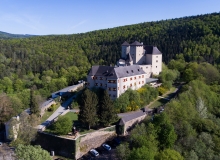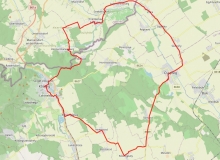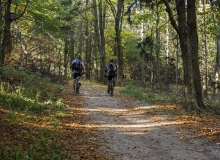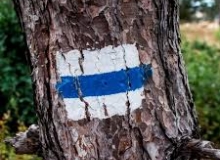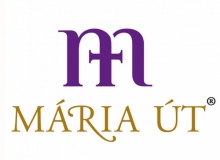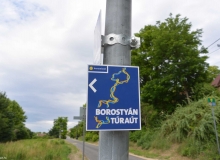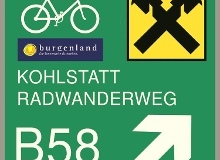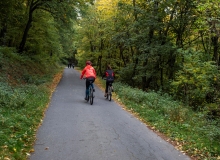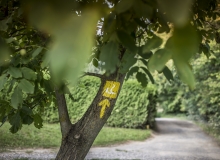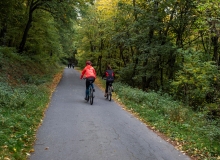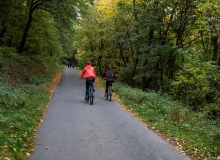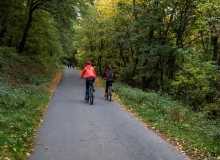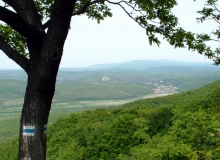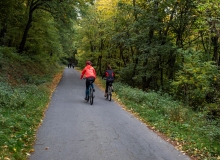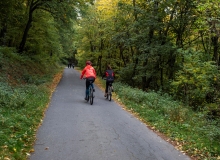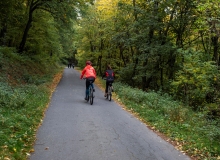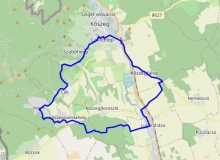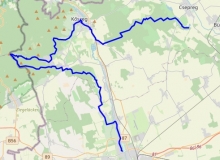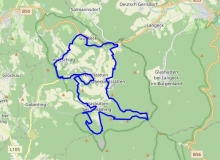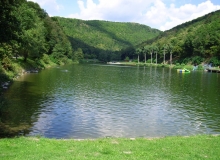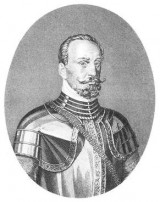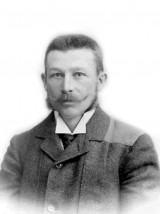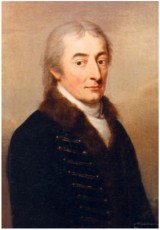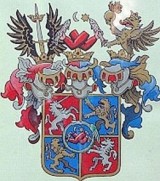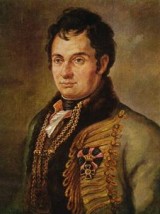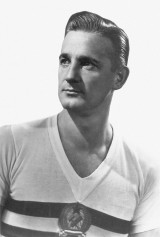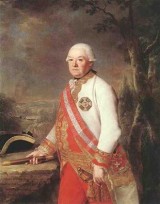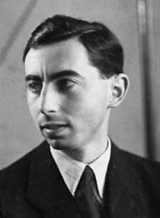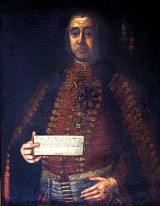Explore notable people in Kőszeg
The number of people who were born or lived in Kőszeg and gained national or international reputation is almost inestimable.
Among them we can find artists, soldiers, scientists, politicians and sportsmen. It is a great challenge to select the 10 most important.
Térkép
Látnivalók
1. Jurisics Miklós, Rájnis J. u. 9. (Jurisics Castle) GPS: 47.389670 / 16.538719
1490, Zengg – 1543, ?
His Croatian father arrived to Habsburg Krajna during the wars against the Turks.
For his feat, Miklós Jurisics received a plot of land and was promoted to the rank of knight. He received his first military rank in 1522 when he was appointed the commander of the troops of the border territories. In 1523, he was made commander-in-chief of the territory. In 1524, he became the member of the Imperial Diet of Vienna. In 1528, he became the captain of Rijeka and its neighbourhood. In 1529 he received Kőszeg as a pledge possession. In 1530, he was sent to Istanbul as an envoy but he was imprisoned and released after only 2 months.
Between 5th and 30th August 1532 he successfully defended Kőszeg. Due to his success, Ferdinand I promoted him to the rank of Baron. In 1537 he became the eternal possessor of Kőszeg and the neighbouring manor. At the same time, he became the supreme army commander of 5 Austrian provinces and Slavonia. In 1539, he was appointed the governor of Krajna but he resigned in 1543 due to illness. The date of his death is unknown but he is supposed to have died sometime before 30th January, 1544.
További információk
Castle Jurisics is our largest historical memorial, where the late gothic and early renessiance castle corridor is one of the most beautiful of its kind within Hungary The former Landowner’s Castle surrounded by town-wall and the moat is situated in the north-western corner of the inner city. In the Castle Courtyard, the earliest remnants of the former pile-dwelling were found. After the Siege by the Tatars in mid-13th century, they started to build this lower castle in the valley beside the settlement. This lower castle substituted the former upper castle’s role in the middle age, as the upper old castle was too complicate to be approached for trade and administration.
The castle have two distinct parts: the Outer and the Inner Castle. The guards and the service personnel of the castle was settled in the buildings of the Outer Castle. At the end of the 13th Century its owner was the Heder family. Prince Habsburg Albert took the castle in 1289. Andrew III, the last king of the Hungarian Arpad House ruined the upper old castle int he Kőszeg hills, according to the terms of the Hainburg treaty.
In 1327 the Anjou king Carlo Roberto took the castle from the family Kőszegi after harsh years of fightings. He gave strong royal privilages to the town after his victory. Town walls with strong towers were built protecting Kőszeg against the onslaughts of the Austrians. The water of the river Güns (Gyöngyös) was directed into the moats around the castle walls. The castle went to the Garai family in 1392, then to the Habsburg family until the renessiance Hungarian King Mathias Corvinus took it back in 1482. The Habsburgs took Kőszeg again after the death of Mathias in 1492.
The most wellknown Siege of Kőszeg happened in 1532, when the Ottoman Sultan Suleiman attacked Kőszeg fiercly with his 80 thousands soldiers on his way to Wien. The Captain and Protector of the Castle, Nikolaus Jurisich has its sculpture today in the outer courtyard. Even today, there is a festive 11 o’clock bell-ring in Kőszeg conmemorating the ending of the month-long, unsuccessful Ottoman Siege in 1532.
A brick bridge over the moat leads us to the inner castle. Just next to the gate we can find the traditional herb-garden of the castle, together with a smal handicraft shop, the Nature Shop where one can buy the traditional products of the Kőszeg region and the Írottkő Nature Park. A nicely planned inner court receives us behind the gates. A rich Castle Exchibition is located in the southern and eastern wings. Centuries of Kőszeg exhibition, the Royal Crown Room, the Golden Room and Armoury awaits the visitors. The renessiance corridor and the Cavalier’s Room gives place to numerous cultural events and to various art exchibitions.
More information: www.jurisicsvar.hu
2. István Chernel, Chernel K. u. 10. (Festetics-Chernel Palace) GPS: 47.388838 / 16.539380
Kőszeg 1865 – Kőszeg 1922
Ornithologe, Vorsitzender des Ungarischen Ornithologischen Institutes
Seine mittelschulische Ausbildung erwarb er in Kőszeg und Sopron, danach studierte er Jura, aber sein naturwissenschaftliches Interesse setzte sich durch. Im Jahr 1882 veröffentlichte er seinen ersten Fachartikel im Journal Vadász. Von Anfang an beschäftigte er sich mit Vögeln. Eine dauerhafte Warte hat er bei dem Velencer See aufgebaut, er war in Hanság, in den Kleinen Karpaten, in Siebenbürgen und in Norwegen. Aus dem letzten Land brachte er sich das Wissen des „Fuß-Schlittenfahrens”, also des Skifahrens mit.
Sein wichtigstes Werk „Magyarország madarai különös tekintettel gazdasági jelentőségökre” („Die Vögel von Ungarn hinsichtlich auf ihre wirschaftliche Bedeutung“)erschien im Jahre 1899 und wird auch noch heute von vielen verwendet. Im Jahre 1916, nach dem Tod von seinem Lehrmeister, Ottó Hermann, wurde er zum Direktor des Ungarischen Ornithologischen Institutes ernannt. Diese Position besaß er bis zu seinem Tod.
További információk
The Chernel family owned this magnificent building until nationalization. On the site of Chernel or Festetics Palace, two smaller houses stood at the beginning of the 17th century under the ownership of Count Nádasdy’s family. They were joined by József Kelcz, lawyer of the Transdanubian District Board and the later chancellor. The house was rebuilt in 1766 in the Baroque style. It was purchased by Count Imre Festetics after his resignation from the army in 1802. Today he is considered to be the father of genetics. Ownership of the premises passed to Chernel family through marriage. They owned the building until its nationalization.
3. Count Festetics Imre, Chernel K. u. 10. (Festetics-Chernel Palace) GPS: 47.388838 / 16.539380
peer, scientist
1764, Felsőság (today Simaság) – 1847, Kőszeg
The significance of his scientific research has recently been discovered. In his youth he was a soldier and took part in the last war against the Turks. He was wounded, and in 1790 he was dismounted as a captain after serving for 8 years. He moved into his palace in Kőszegpaty and bought a house in Kőszeg, where he spent a lot of time. Like his brother György Festetics, he had strong national feelings. In his advanced age he had reduced mobility, and finally was confined to wheelchair. He died in Kőszeg and was buried in Kőszegpaty.
His scientific research was based on his experience on his own farm, especially in sheep breeding. He published an article in 1819 in Bruno Economic News. His article on inbreeding is the very first reference to the "Genetic Laws of Nature". Although this definition is attributed to Gregor Mendel today, he stated his theories much later, in 1865.
További információk
The Chernel family owned this magnificent building until nationalization. On the site of Chernel or Festetics Palace, two smaller houses stood at the beginning of the 17th century under the ownership of Count Nádasdy’s family. They were joined by József Kelcz, lawyer of the Transdanubian District Board and the later chancellor. The house was rebuilt in 1766 in the Baroque style. It was purchased by Count Imre Festetics after his resignation from the army in 1802. Today he is considered to be the father of genetics. Ownership of the premises passed to Chernel family through marriage. They owned the building until its nationalization.
4. Count Sigray Jakab, Chernel K. u. 12. GPS: 47.38859446236178 / 16.539463483964383
1764, Kőszeg – 1795, Buda
Lawyer, one of the leaders of the Hungarian Jacobin Movement
Sigray’s father was Comes Károly Sigray, the chef of the Transdabunian District Board. His mother was Zsófia Szvetics, daughter of Chief Justice Jakab Szvetics. The Sigray family was conferred the title of Count in 1780. Jakab studied law and was employed at the District Board, where he worked until his arrest.
He was the head of the Reform Association during the Hungarian Jacobin Movements. After the fall of the movement, Count Jakab Sigray was condemned to death for high treason and beheaded on 20th May 1795, along with other prominent figures of the movement. He was to first to be executed, and he was struck three times before he was finally killed.
További információk
At the beginning of the 18th century, the 2 smaller buildings belonged to the Nádasdy family. They were united and converted into a three-story building by the Sigray family. It became the largest and tallest palace in Kőszeg. The Transdanubian District Board rented the premises between 1816 and 1821. The offices of the Kőszeg District Court were here for the longest time. From the 1870s onwards the entire first and second floors housed the offices of judiciary and land registry. Between the two world wars, the district judge also worked here.
In 1887, a law office was opened here by Géza Csorba, who was Mihály Táncsics’s son-in-law and previously edited the Népszava and then Kőszeg és Vidéke Journal during his stay in the town.
5. József Csekonits, Jurisics M. tér 13. GPS: 47.389416 / 16.541024
1757, Kőszeg – 1824, Pest
Major General
His father was the lawyer at the Transdanubian District Board. He completed his secondary education in Kőszeg and Vienna, and in 1774 he started his military career. He was a captain by 1785.
He developed a special interest in horses, which culminated in Count Hunyady’s stud farm in Ürmény. He established the Royal Stud in Mezőhegyes when Emperor Joseph II accepted his plan. He was appointed to the Remont Commandant of the Hofkriegsrat. He founded the State Stud in Bábolna in 1789. He became a major in 1787, a lieutenant-colonel in 1789 and a colonel in 1790. During the Napoleonic Wars, he was responsible for supplying the army with cattle. Due to the program’s success, he was awarded the Order of Saint Stephen by the monarch and was promoted to the rank of Major General in 1803.
6. Lóránt (Lipovits) Gyula, Várkör 30. GPS: 47.390222 / 16.542736
1923, Kőszeg – 1981, Thessaloniki
Football player, coach, Olympic champion, world champion silver medalist
In 1939 he became a certified athlete of the Kőszeg Sports Association, and was invited to the junior national team twice. In 1942 he played for Szombathely FC and in 1943 for NAC in Nagyvárad, where he was a Hungarian champion. He was the player for ITA Arad, and then VASAS SC, starting in 1946. In 1948 he played as a midfielder for Hungary’s National Team. In 1951 he joined Honvéd where together with six of his fellow internationals, he helped the team win three Hungarian League titles. As one of the legendary Mighty Magyars, he helped Hungary become Olympic Champions in 1952, Central European Champions in 1953, defeat England twice and reach the 1954 World Cup final.
After retiring as a player, Lóránt became a coach, most notably with Honvéd, FC Bayern Munich and PAOK Thessaloniki FC. While at PAOK, he guided them to a Greek Championship title in 1976. On May 31, 1981, while still working as coach, he suffered a heart attack while watching PAOK play Olympiacos CFP, and died at the game.
There is a memorial plaque at his birthplace. The local sports centre, where visitors can see his memorial, was named after him in 1996. In 1998, the posthumous Honour Citizen Award was granted to him by the town.
7. Count András Hadik, Gyöngyös u. 22. GPS: 47.392363 / 16.540587
1710, Csallóköz – 1790, Vienna
Field Marshal, head of Vienna Court Council of War
He completed his secondary education between 1719 and 1728 in Kőszeg, where his family owned a house. He wanted to join the Jesuit Order but at the request of his father he changed his mind. He studied law and in 1731 he was appointed as a clerk at the Transdabunian District Board. Later, he chose a military career and in 1738 he became a captain.
During the War of the Austrian Succession he gained fame for his actions against the Prussians using surprise attacks relying on the excellent training of his light cavalry hussars. During the war he was promoted to the rank of Lieutenant-Colonel. In 1744 he gained the rank of Commanding Colonel of his own hussar regiment, and then near the end of the war in 1747 he attained the rank of General and was appointed commander of a cavalry brigade. Early in the Seven Years’ War, Hadik executed the most famous hussar action in history: when the Prussian King Frederick was marching south with his powerful armies, the Hungarian general unexpectedly swung his 5,000-troop force of mostly hussars around the Prussians and took their capital, Berlin. For this feat, Hadik was promoted to the rank of Field Marshal. He was also awarded the Grand Cross of the Maria Theresia Order.
8. Bartha László, Királyvölgyi utca 30. (Bartha Cottage) GPS: 47.392768 / 16.535620
1908, Cluj-Napoca – 1998, Kőszeg
Kossuth-prized painter, scenic designer, book illustrator
He completed his education at the Hungarian Academy of Fine Art, where his master was Ágost Benkhard. He studied in Italy in 1937-1938 and in France in 1946-1948. Between 1950 and 1952 he worked as a restorer. He lived in Tihany from 1955 to 1968 and then he moved to Kőszeg, where he lived in Küttel Cottage called Bartha Cottage today.
He was granted a Meritorious Artist Prize in 1975, an Outstanding Artist Prize in 1985 and Kossuth Prize in 1993. He became the member of Szécheny Academy of Literature and Arts in 1992.
From lyric realism he transitioned to postmodern and lyric abstract expressions during his career.
He had exhibitions from 1942 to 1998 in Szombathely, Tihany, Kőszeg, Cluj-Napoca, Stuttgart, Bucharest and Paris. He illustrated books written by Thomas Mann, Arnold Zweig, François Villon and Mihály Babits. He designed sets for dramas written by Ede Szigligeti, László Németh, Imre Madács, Arthur Miller, G.B. Shaw and other authors.
9. Jakab Szvetics, Chernel utca 14. GPS: 47.388448 / 16.539726
1703, Kőszeg – 1781, Ivánc
His noble family came to the town from Tótság (today in Slovenia). His grandfather worked as a school master, a curator, a judge and an envoy. His father, and his step-brother, József, worked in the town’s administration as well. Jakab studied law and started his career as a lawyer at the age of 21 at the Transdanubian District Board. He continuously climbed the career ladder when finally in 1765 he gained the highest judicial position in Hungary and became the Chief of the Royal Board (Excelsa Curia Regia). At the same time he was promoted to the rank of Chief Justice. It was the most prestigious and highest position that a citizen from Kőszeg had ever had in public life of Hungary. In 1765, he was granted the title Knight of the Royal Hungarian Order of Saint Stephen. He was promoted to the rank of Count by the monarch after his resignation.
Fordítás (angol nyelvre): Keresztes Nóra, Angol nyelvi lektorálás: Eliza Plous
Fordítás (német nyelvre):
További városnéző séták
